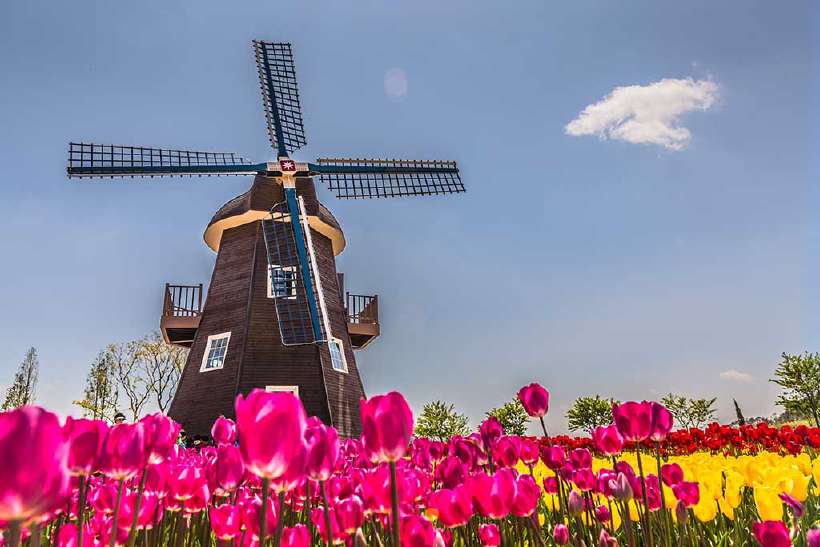What is the Secret of the Windmill?
Home / Science for Kids / 5Ws & H For Kids / What is the Secret of the Windmill?
It was a particularly windy day in late July when my cousin and I sat down to make a pinwheel. The paper was folded into a wheel, the pin inserted at the heart of it and the entire structure fixed to the broomstick.
As our pinwheel took shape we ran out braving the sun and the hot wind. The pinwheel caught the wind and rotated. Seeing it, our hearts pin-wheeled as well.
Energy from wind
A few days later we happened to see the photograph of a windmill in a magazine. “Don’t these windmills look exactly like the pinwheels we made?” my cousin shouted. And what did we find? That they are actually similar! Like the pinwheel, the windmill also uses the wind’s energy to turn the blades on a large wheel. This movement of the blades is used to pump water, generate electricity or pound grain.
The land of windmills
Of course many others have recognised the strength of wind power. It is clean and it does not create pollution. Countries, which have abundance of wind power, have derived large benefits from wind energy.

Take Holland, for example. Why is it called the land of windmills? Because most of its land lies below sea level, and windmills are used to pump water into canals from low-lying areas that are filled with water. In the 17th century there were over 8,000 windmills in use in Holland!
No wonder, as pollution rises, people in other parts of the world are slowly realising the power of simple solutions such as windmills. The pinwheel, too, has great power.
271 words |
2 minutes
Readability:
Grade 6 (11-12 year old children)
Based on Flesch–Kincaid readability scores
Filed under: 5ws and h
Tags: #holland, #pollution, #wheels, #netherlands
You may also be interested in these:
Pollution – an old ancestral legacy
Save rivers, lakes from worshippers
High Performance, Low Pollution
What is Ribotyping?
What are Dry Clouds?